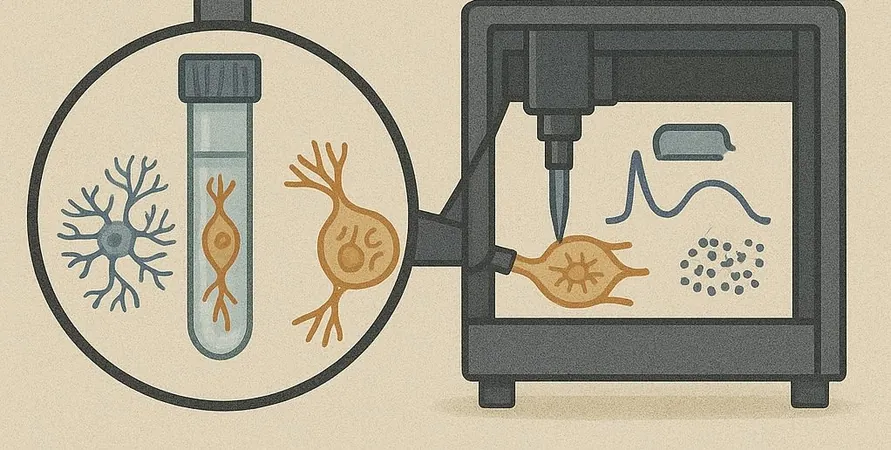
Revolutionizing Neuroscience: The Breakthrough in High-Speed Automated Electrophysiology
2025-06-13
Author: John Tan
Unlocking the Secrets of the Brain
The key to tackling neurological diseases lies in understanding the electrical chatter of neurons. Yale researchers have made a groundbreaking leap by introducing a high-throughput automated technique, capable of capturing simultaneous electrical activity from numerous neurons without any bias. This innovative method reveals a powerful "functional fingerprint" of neuron populations in their natural state, illuminating new pathways for understanding and treating neurological conditions.
From Slow to Superfast: A Game-Changer in Research
For years, the patch-clamp technique has been regarded as the gold standard for probing the electrical behavior of neurons, the building blocks of our nervous system. Yet, its manual execution is notoriously slow and labor-intensive. Recent improvements in robotic patch-clamp methods have sped up the process, but they often rely on artificially grown neurons, limiting our ability to study them in their authentic environments.
A Revolutionary New Methodology
Developed in the lab of Dr. Stephen G. Waxman at Yale School of Medicine, this groundbreaking methodology transforms how we study neurons. By allowing researchers to examine the electrical activity of neurons in their native state, it combines the precision of traditional studies with the efficiency needed for large-scale research.
A Step Forward in Disease Understanding
Dr. Mohammad-Reza Ghovanloo, a co-lead author of the study, emphasizes the importance of this method. "We can now analyze the functional and pharmacological characteristics of neuron populations right after extraction, enabling us to make straightforward comparisons. Such insights can significantly enhance our understanding of disease mechanisms and lead to actionable clinical outcomes."
Next-Level Data Analysis Tools
To maximize the utility of their new approach, the research team has rolled out an open-source analysis suite featuring a user-friendly graphical interface. Dr. Sidharth Tyagi, another co-lead author, states, "This analytical tool allows us to match neuron data with biophysical equations, yielding a detailed functional characterization of complex datasets. With this blend of automation and robust analysis, we eliminate biases and boost reproducibility in electrophysiological experiments."
A Transformative Advancement in Neuroscience
Completing the entire process—from neuron preparation to analysis—now takes just 6 to 18 hours, a staggering improvement compared to the days required by traditional methods. This revolutionary advancement in neuroscience and pharmacology research could have far-reaching implications.
Opening New Doors for Drug Discovery
The ramifications of this research extend well beyond fundamental neuroscience, potentially revolutionizing drug discovery. Dr. Waxman sums it up succinctly: "By facilitating high-throughput, simultaneous analysis of large numbers of native neurons, our novel approach not only deepens our understanding of neuronal function but also lays the groundwork for developing targeted therapies for neurological disorders."





 Brasil (PT)
Brasil (PT)
 Canada (EN)
Canada (EN)
 Chile (ES)
Chile (ES)
 Česko (CS)
Česko (CS)
 대한민국 (KO)
대한민국 (KO)
 España (ES)
España (ES)
 France (FR)
France (FR)
 Hong Kong (EN)
Hong Kong (EN)
 Italia (IT)
Italia (IT)
 日本 (JA)
日本 (JA)
 Magyarország (HU)
Magyarország (HU)
 Norge (NO)
Norge (NO)
 Polska (PL)
Polska (PL)
 Schweiz (DE)
Schweiz (DE)
 Singapore (EN)
Singapore (EN)
 Sverige (SV)
Sverige (SV)
 Suomi (FI)
Suomi (FI)
 Türkiye (TR)
Türkiye (TR)
 الإمارات العربية المتحدة (AR)
الإمارات العربية المتحدة (AR)